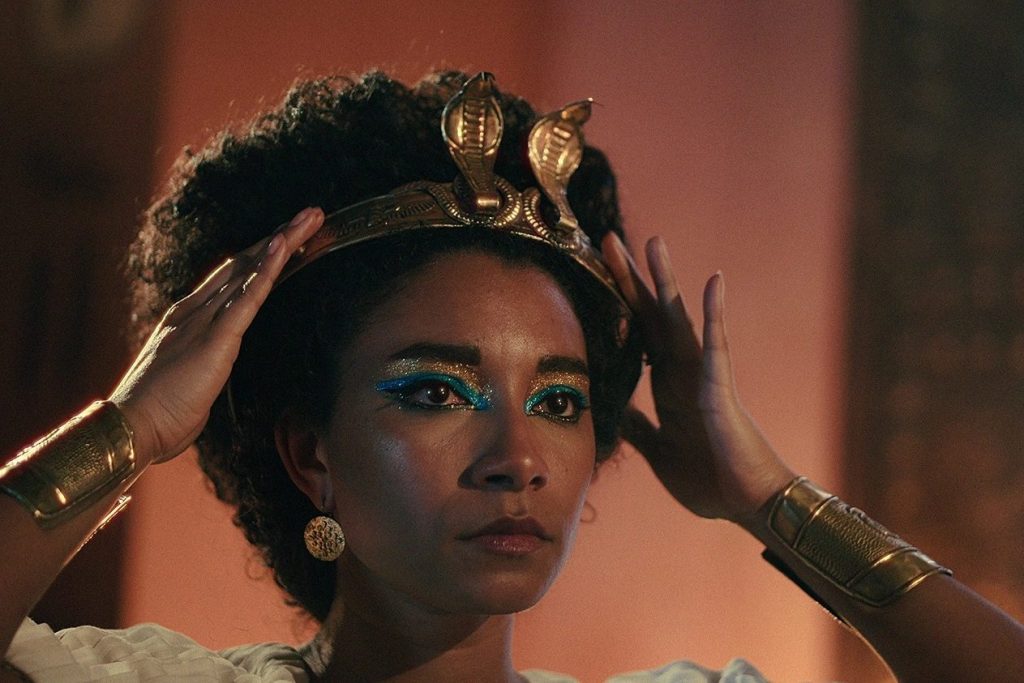“I remember my grandmother saying to me: I don’t care what they tell you in school, Cleopatra was black.” So asserts a trailer for a new Netflix “docuseries” looking at the lives of powerful women in history. Alas for the speaker, an American of African descent, her grandmother’s idea of historical truth was highly subjective. It was built on an absurd generalization about all Africans being black, and the regrettable assumption that skin color is an important criterion for judging people’s merits. No one denies the awful legacy of slavery among African Americans, and the wish to find female African heroines is understandable — but it is also vital to get the facts right.
Netflix may well be doing a good service by making documentaries about famous queens, but attaching crude racial criteria to these figures makes nonsense of the past
That is not easy when looking at the first century BC, but it is easier with Queen Cleopatra VII of Egypt than with almost anybody from that time. She was a member of a Greek dynasty ruling over Egypt that could trace itself back to Alexander the Great’s general Ptolemy. By her time the number of kings of Egypt named Ptolemy had reached thirteen, including some notable eccentrics such as Ptolemy VIII who floated around his court in a diaphanous gown that revealed every part of his portly physique all too clearly. The Ptolemies married other Greeks, and occasionally they even married their sisters, an ancient Egyptian custom among the Pharaohs that their many Greek subjects found distasteful. Although the name of Cleopatra’s mother is unknown, there are good grounds for insisting that she was not of Egyptian descent. The most one can claim is that some of the blood of the dynasty of Mithridates, king of Pontus (Anatolia and the Black Sea region) ran in Cleopatra’s veins.
Mithridates made political use of his Persian heritage, just as Cleopatra made use of her Egyptian heritage, with one difference: Cleopatra’s Egyptian ancestry was actually non-existent. Nonetheless she appeared on carvings as an Egyptian Pharaoh making oblations to the ancient Egyptian gods, though conveniently there was also an invented god in Ptolemaic Egypt called Serapis who was a fusion of a Greek and Egyptian deity.
Cleopatra’s Greekness was expressed in her daily speech — she probably talked with her Roman lovers Julius Caesar and Mark Antony in Greek, not Latin. She was the first Ptolemaic ruler of Egypt to take the trouble to learn Egyptian, but she had several other languages at her fingertips and, like several of her predecessors who had endowed the famous Library of Alexandria, she was formidably learned.
Alexandria, not one of the ancient Egyptian cities, was her capital. The Alexandrians were not too certain that they even lived in Egypt, as the popular phrase Alexandria ad Aegyptum revealed: that little word ad meant “on the way to” not “in.” And Alexandrians (very many of whom were Greek, along with plenty of Jews) saw themselves as part of the wider cultural world of Hellenistic Greece. Even the Jews read the Torah aloud in Greek in their synagogues, one of which was constructed for them by Cleopatra.
Then there is the simple question of her appearance. There are several busts that are thought to portray her, and also images on coins. She had a prominent nose. Her great beauty may well be a myth. She was the last of her line; she became indebted to factions in Rome for political support, with disastrous consequences for her — hence her suicide — and this led to the incorporation of Egypt into the Roman Empire. The city of Rome began to draw in vast quantities of Egyptian grain, much of which was distributed to the citizens of Rome.
The most notorious attempt to characterize ancient Egyptian civilization as “black” can be found in a book by Martin Bernal entitled Black Athena. Bernal was a Sinologist, the son of the distinguished scientist and radical socialist J.D. Bernal. Fascination with his remote Jewish roots in medieval Spain led him to the ancient history of the Middle East and to the assertion that the roots of Greek civilization were not European but African and Asiatic (through the Phoenicians of Lebanon). Anyone looking at archaic Greek sculpture will quickly see the debt that early Greek artists owed to Egyptian statuary, particularly in the kouroi, statues of young males. But the distance between admitting that the Greeks were inspired by what they saw in neighboring lands and the argument that Greek civilization was borrowed lock, stock and barrel from Egypt is enormous, and Bernal’s book was rubbished when it appeared in 1987, even though it still has its enthusiastic admirers who are content to ignore Bernal’s haphazard use of evidence and his constant errors of fact. Most, though, have probably not gone further than the book’s alluring title.
Netflix may well be doing a good service by making documentaries about famous queens, but attaching crude racial criteria to these figures makes nonsense of the past. What, one might ask, would they do with Kahina, the Berber queen at the time of the Arab invasion of north Africa, who may have been Jewish and may — like many Berbers today — have been fair-skinned and blue-eyed? Or the first slaves exported from West Africa by the Portuguese, fair-skinned Berbers from Mauritania and the Canaries? It is the now familiar problem of the historical truth getting in the way of a politicized truth that represents what people want the past to have been, rather than what actually happened.
This article was originally published on The Spectator’s UK website.

























